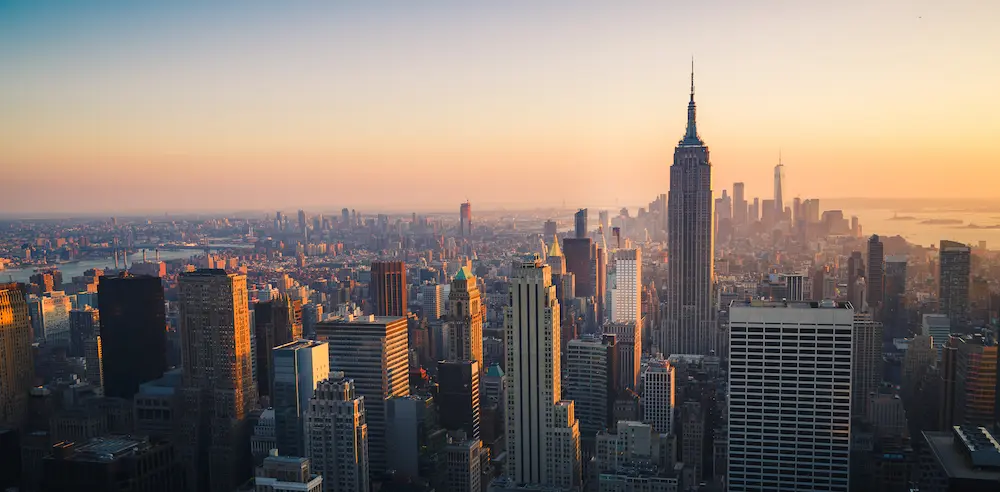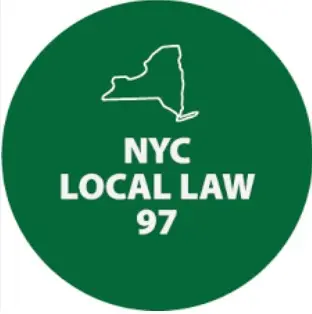
The City of New York updated Local Law 97 (LL 97) in December of 2024. Here’s a quick overview of what you need to know:
- Low-income landlords get a break with the new Affordable Housing Reinvestment Fund to provide electrical retrofits for affordable housing. The purchasing offsets it generates give building owners the ability to comply with the law and reduce emissions in affordable housing in the city.
- Facilities Managers may be pleased to see amended greenhouse gas calculations for campus systems, and alternative compliance processes for some cogeneration systems already in place.
- Historical preservationists, architects, and engineers may applaud the revisions that include adjustments on emissions limits for buildings with legal, physical, or financial constraints – “providing much needed detail” on the methodology on why and how adjustments may be granted.
- The final pillar of the December 2024 update sets fees for submissions on emissions reports and other applications so owners are clear on the up front reporting and application costs.
------------------------------------------------------------------------------------------------------------------------------------------------------------------------
GPRS helps stakeholders and contractors come into compliance with ESG goals and Local Law 97 with a wide variety of products and services – from 2-6mm accurate 3D laser scans and deliverables of the most complex historical spaces to the immediately actionable subsurface utility map data you need before breaking ground, to 99.8% accurate concrete scanning and imaging before you cut, core, or drill, GPRS can help you meet LL97’s requirements faster, easier, and more safely. Learn more about GPRS, here.
-------------------------------------------------------------------------------------------------------------------------------------------------------------------------
Where Does Rule Update Three Fall in the Scope of LL97?
This is the third major rule addition to LL97 since it was enacted in 2019. The previous rule additions took place in December 2022 and December 2023. The 2022 goals were to establish greenhouse gas emissions for structures over 25,000 s.f., require annual emissions reporting to the New York Department of Buildings, and laid out penalties for excess emissions.
2023’s rule additions sought to loosen some of the 2022 standards by allowing for referred compliance, defining “good faith efforts” to comply, and allowed building owners to apply for an extension on their emission limits till 2026.
How it Began – Enacting LL97

New York City's Local Law 97 (LL97), enacted in 2019 as part of the Climate Mobilization Act, mandates significant reductions in greenhouse gas (GHG) emissions from large buildings. Targeting structures exceeding 25,000 square feet, LL97 aims for a 40% reduction in emissions by 2030 and an 80% reduction by 2050, relative to 2005 levels.
Applicability and Compliance Thresholds
LL97 applies to:
• Buildings over 25,000 gross square feet
• Multiple buildings on a single tax lot collectively exceeding 50,000 square feet
• Condominium complexes governed by the same board, with combined areas surpassing 50,000 square feet
• Exemptions include industrial facilities, certain residential properties, and specific nonprofit organizations
Emission Limits and Compliance Periods
The law establishes emission intensity limits (measured in kilograms of CO₂ equivalent per square foot) based on building occupancy classifications. The initial compliance period spans 2024 to 2029, with stricter limits commencing in 2030. For example, residential buildings (Group R-2) have a limit of 6.75 kgCO₂e/sq ft for 2024–2029, tightening to 4.07 kgCO₂e/sq ft for 2030–2034.
What is LL97's Impact on Construction Projects?
For architects and engineers, LL97 necessitates integrating energy efficiency and low-carbon strategies into both new constructions and renovations:
• Design Considerations: Incorporate high-performance building envelopes, advanced HVAC systems, and energy-efficient lighting to minimize energy consumption.
• Electrification: Transition from fossil fuel-based systems to electric alternatives, such as heat pumps, to align with the city's decarbonization goals.
• On-Site Renewable Energy: Implement solar photovoltaic systems or other renewable technologies to offset building emissions.
These measures not only ensure compliance but also enhance building performance and occupant comfort.
Penalties for Non-Compliance
Buildings exceeding emission limits face financial penalties calculated at $268 per metric ton of CO₂ equivalent over the threshold. Failure to submit required reports incurs fines of $0.50 per square foot per month, and falsifying reports can result in penalties up to $500,000.
Flexibility Measures and Extensions
Recognizing the challenges in meeting these requirements, the city offers flexibility mechanisms:
- Good Faith Efforts: Building owners demonstrating earnest attempts to comply may receive extensions. This involves submitting a decarbonization plan by May 1, 2025, detailing strategies to meet emission limits by 2026 and outlining long-term plans for 2030 compliance.
- Renewable Energy Credits (RECs): Owners can purchase RECs to offset emissions, though reliance solely on RECs without implementing on-site reductions is discouraged.
Recommendations for Architects and Engineers
To navigate LL97 effectively:
- Early Integration: Embed energy modeling and sustainability assessments at the project's inception to identify cost-effective compliance strategies.
- Collaborative Approach: Engage multidisciplinary teams, including sustainability consultants and MEP (mechanical, electrical, plumbing) engineers, to develop holistic solutions.
- Stay Informed: Regularly update knowledge on evolving regulations, technological advancements, and best practices in sustainable design.
By proactively addressing LL97's mandates, professionals can lead in creating resilient, efficient, and compliant urban environments.
Additional Resources for Building Owners Include:
NYC Department of Buildings' Guidelines on greenhouse gas emissions
Understanding and implementing LL97 is pivotal for the future of sustainable construction in New York City. Architects and engineers play a crucial role in this transition, ensuring that the built environment contributes positively to the city's climate objectives.
Frequently Asked Questions
What is ESG and how does it impact greenhouse gas emissions?
ESG in facilities and construction refers to the integration of Environmental, Social, and Governance principles into planning, design, construction, and operational practices. It emphasizes sustainable resource use, carbon reduction, worker safety, community impact, ethical procurement, and regulatory compliance. ESG frameworks guide decision-making to minimize environmental harm, promote social responsibility, and ensure transparent governance. In this sector, ESG is essential for risk management, long-term asset value, and alignment with investor and regulatory expectations. Learn more about ESG, here.
How do GPRS' services support net zero and greenhouse gas reduction construction?
GPRS works closely with facilities managers, architects, engineers, and general contractors to support their sustainable building goals. Our suite of above and below-ground infrastructure data capture tools provide project managers, designers, builders, and stakeholders the peace of mind they need to work more efficiently, streamlining communication and collaboration by providing secure, shareable interactive utility maps, structural data, and existing conditions records via SiteMap® (patent pending), our GIS and project management software platform. Every GPRS customer receives complimentary SiteMap® Personal access, and we offer a variety of digital management solutions for virtually every industry. To learn more about GPRS and SiteMap®, click here.
